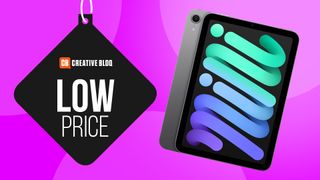"Build a portfolio that highlights what you value most”: a day in the life of Chris Bush
Nexer Digital’s head of design discusses the value of human-centred design.
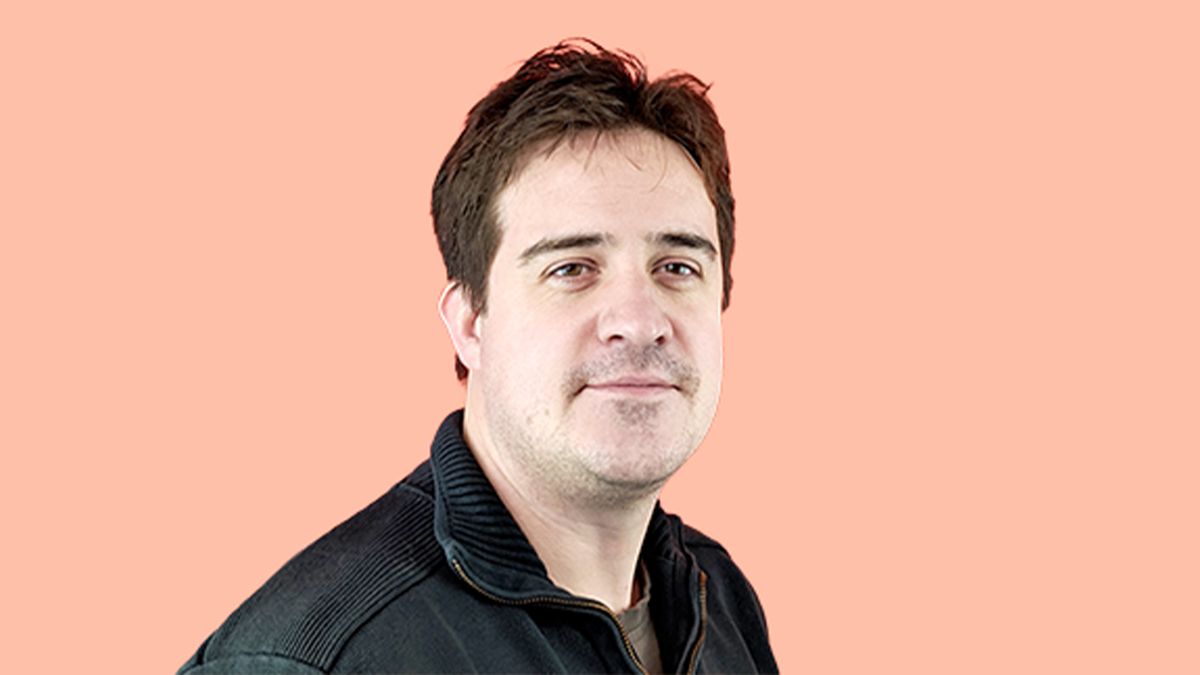
Chris Bush is head of design at Nexer Digital, a design and development agency with a human-centred approach. Heading up the research, service design, content, UX and accessibility teams, Chris' leadership is guided by a passion for inclusive design that empowers users.
Unafraid to be candid, Chris enjoys sharing the good, the bad and the ugly, side of usability in design. As part of our Day in the Life series, I caught up with Chris to discuss Nexer's innovative work, inclusivity in the design sector and what the rise in AI means for the industry.
Tell me about a typical day in your role
I’m fortunate to head up Nexer Digital’s Design Group. In my role, I look after the Research, Service Design, Content, UX, and Accessibility teams – five amazing teams full of very talented and passionate individuals who all care about building truly user-centred products and services.
With regards to how a typical day looks, things can vary quite a bit depending on what’s going on. Almost every day starts with a round of check-ins. If I'm at home, I normally start with a quick scan through Teams and say ‘Hi’ to the people that I’m going to be working with that day. If I'm in the office, I normally do a quick loop around the office with a brew in hand and have a catch-up with the people I've not seen for a while.
Once the day is underway, I spend most of my time on team support, project delivery and new business development. The rest of the day is usually spent in meetings and catching up with various teams and individuals on specific project objectives and challenges.
This week, I've been working with our research team on an exciting project. We’re working with an organisation that wants to learn more about the challenges of people living with long-term health conditions and how they impact their daily lives. I’m particularly enjoying this piece of work because we’re using a few different techniques to collect our insights; usability studies to observe first impressions and a diary study to see how behaviours change when the participants are doing their daily activities. We’re only a couple of weeks in and already seeing some very interesting findings.
We've also just held our annual Camp Digital conference - an event that explores digital design in all its forms. Now in its 12th year, it generates so many interesting ideas and conversations. I'm currently in the process of catching up with our design teams and client teams on what they have taken out of the sessions and if there are any ideas or practices, we might want to include in our future work.
At the end of the day, I always try to give myself a bit of time to wind down. Often, it's as simple as checking in on a particular project or pitch that’s been consuming my thoughts throughout the day to see how we're getting on. It’s quite a simple thing but I find it a nice way to give myself the space to clear my head before heading home and enjoying the evening.
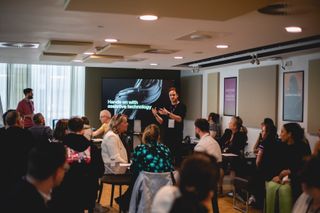
What is human-centred design and why is it important?
Human-centred design is an approach that places the needs, behaviours, and motivations of people at the core of the design process. It involves gaining a deep understanding of users through research and observation, actively involving users throughout the design process, and developing solutions based on their feedback.
The key principles of human-centred design include understanding user needs, designing with your user rather than for your users, taking an iterative approach to developing and testing your ideas, building highly collaborative multidisciplinary teams, and most importantly focusing on the overall user experience rather than just functionality.
By prioritising these principles, human-centred design ensures that products and services are tailored to real human needs, leading to better adoption, usability, and satisfaction.
How can people use generative AI responsibly? And how can organisations use this to improve access to their products and services?
Generative AI has the potential to improve access to products and services, but it must be used responsibly to mitigate risks and ethical concerns. By training AI models on diverse data sets that represent different cultures, abilities, and perspectives, organisations can generate inclusive visuals and user interface elements that resonate with a broad range of users.
Organisations can use the power of AI to create more personalised, adaptive, and inclusive user experiences that cater to diverse abilities and backgrounds. By integrating AI capabilities like natural language processing, machine learning, and computer vision, products can dynamically adjust interfaces, content, and interactions based on individual user needs and preferences. AI can also drive powerful accessibility features such as real-time captioning, audio descriptions, translation, and voice interfaces, making digital products more usable for individuals with disabilities or language barriers.
To do this we need to ensure that we have robust processes and implement delivery models that have human oversight to prevent the propagation of biases, misinformation, or offensive content that could marginalise certain groups. Collaboration between AI and diverse teams of designers, researchers, and users is key to reviewing and refining AI-generated outputs for inclusivity and appropriateness. Established ethical guidelines addressing fairness, transparency, and accountability should guide how generative AI is integrated into projects (such as Google, Microsoft and IBM's ethical AI principles).
This is where the true value of integrating human-centred design and AI coalesce. Instead of creating tools that use AI as standalone products or services, we should focus on collectively embedding AI into our products and services in ways that have a clear focus on user needs. This approach is fundamental to eliminating barriers and enabling people to successfully complete their tasks and achieve their goals.
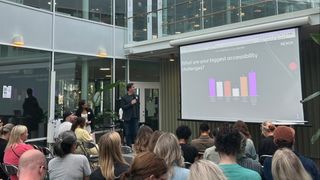
What piece of work done by another organisation has inspired you recently?
One of my favourite examples of well-considered user-centred design is Be My Eyes. A wonderful service that connects visually impaired individuals with sighted volunteers through video calls. A user calls a volunteer, who can help with tasks like reading labels or navigating unfamiliar places by seeing through the user's phone camera. The app uses community support to enhance the independence of visually impaired people.
Last year the service expanded to offer a feature called Be My AI that utilises advanced AI services to provide detailed descriptions of photos and objects to blind and low-vision users, powered by OpenAI's GPT-4.
There are a couple of reasons why I find this such an inspiring piece of design; the first is that the Be My Eyes team recognised in some situations, such as reviewing personal details on a document, a user may not want to share information with a stranger.
The second is that unlike a lot of situations where AI services have been used in the past, the team embedded AI features into a known and core user journey, tested it with users, and made sure that it added value to the quality of the overall service from the perspective of the user. Thus, making it very easy for people to get information when they need it, without stopping people from accessing a real human if they need to do so. It's simply brilliant!
What makes a product inclusive and how do you achieve that?
A product becomes truly inclusive when it’s designed from the ground up to be accessible and usable by the broadest possible range of people, regardless of their abilities or circumstances. Inclusivity means considering the diverse needs of users with various disabilities (visual, auditory, cognitive, sensorimotor).
To achieve inclusivity, organisations should adopt universal design principles that promote equitable use, flexibility, simple and intuitive operation, and tolerance for navigating and correcting errors.
Beyond technical audits of products and tools, it’s vital to conduct user research and usability testing that includes people with and without access needs at the same time. This allows you to really see where your successes and pain points are in your user journeys and provides insights to decide how to act on them.
Transitioning into an iterative design methodology is one of the best ways to learn and improve how you work. Nurture your organisation’s culture by promoting inclusive design awareness and help everyone take on and own some commitment to accessibility - from leadership to your product teams. This is essential for creating genuinely inclusive products that empower its users.
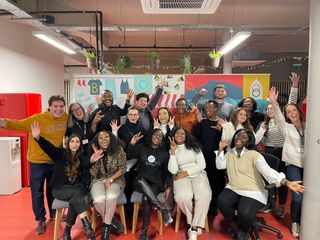
How inclusive is the design industry in 2024?
Nexer has been working in the accessibility and inclusion space since the UK organisation was founded. As part of our work, we frequently run inclusive research, design, and development training courses and in the (more distant) past we always had to start conversations talking about the moral and legal obligations that organisations need to meet.
These days that has changed. There are some wonderful improvements within the design and development communities to support and nurture more inclusive products and services. Many organisations and teams recognise the value of building products and services around user feedback and insights, and many of those teams recognise that expanding their current user-centred design processes to include users with access needs provides them with real benefits.
Sadly, there are a lot of businesses in the world that have yet to embrace user-centred design, particularly the principles of universal design. WebAim runs an audit every year and reviews the top 1 million website homepages. Of those homepages, over the last five years, the same fundamental issues have occupied the top six spots in the list.
In the last year or so, partly driven by the recent change in regulations such as the European Accessibility Act, and partly by the increased awareness of Global Accessibility Awareness Day, I have seen organisations that have poorly accessible websites start to ask questions about how they can be more inclusive.
Whilst this is currently focused on improving technical compliance, I hold a glimmer of hope that the concepts and ideals of inclusive design are starting to reach new audiences.
Which project are you most proud of and why?
One project I'm especially proud of is the NHS Accessibility Lab, a pioneering initiative aimed at improving the accessibility and inclusivity of healthcare services for individuals with disabilities. The lab serves as a hub for raising awareness, research, testing, and innovation, ensuring that the unique needs of patients with a broad diversity of impairments are addressed effectively.
The NHS Accessibility Lab employs a multidisciplinary approach, bringing together experts from various fields, including healthcare professionals, accessibility specialists, user experience designers, engineers, and people with access needs and lived experiences of using health services. This collaborative effort ensures that solutions are comprehensive, user-centric, and tailored to the specific needs of different disability groups.
By combining our expertise with the NHS team's deep understanding of its organisation's needs, we created a place where people could come to review their products and services using assistive technologies and speak to people with lived experiences. We also started to bring together people from across the organisation with a shared passion for driving real change in how the NHS delivers its services, ensuring that no one is left behind in accessing its services.
It's a real testament to the power of collaboration and a shared commitment to universal and accessible design.
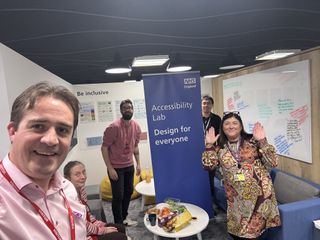
What career advice would you give your younger self?
Develop a solid grounding in design fundamentals and theory and always explore and learn new things. Design is ever-changing, so always aim to expand your skills and knowledge across different disciplines like psychology, technology, sustainability, and business.
Build a portfolio that highlights what you value most; use your professional work to show how you can respond to and help develop ideas and approaches that help meet a given brief.
Use your personal time to try out new ideas and approaches. You'll be surprised how often these things come together.
Invest in going to events and being a part of communities. You'll learn about new ideas and find new sources of inspiration. You'll also meet new people and learn about the different ways of communicating ideas and collaborating.
Lastly, focus more on the problems you want to solve, and how you can help solve them rather than chasing job titles - If you get the first bit right, the rest will follow.
Find out more about Nexer Digital.
Get the Creative Bloq Newsletter
Daily design news, reviews, how-tos and more, as picked by the editors.

Thank you for reading 5 articles this month* Join now for unlimited access
Enjoy your first month for just £1 / $1 / €1
*Read 5 free articles per month without a subscription

Join now for unlimited access
Try first month for just £1 / $1 / €1

Natalie is Creative Bloq's staff writer. With an eye for trending topics and a passion for internet culture, she brings you the latest in art and design news. A recent English Literature graduate, Natalie enjoys covering the lighter side of the news and brings a fresh and fun take to her articles. Outside of work (if she’s not glued to her phone), she loves all things music and enjoys singing sweet folky tunes.
